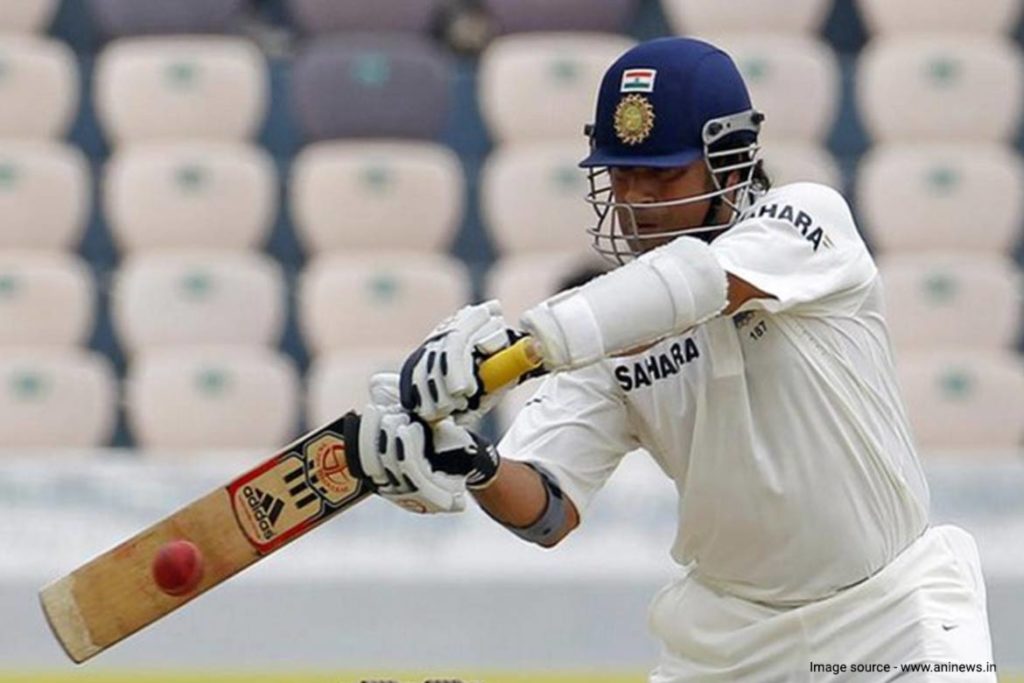Sachin Ramesh Tendulkar, a former captain of the Indian national cricket team, was born on April 24, 1973. He is considered highly to be one of cricket’s best batsmen.
The all-time leading run-scorer in international cricket, the only player to score 100 international centuries, the first to score double century during a career.
He scored the most runs in both Test and One Day International (ODI) cricket and was the only player in international cricket to score more than 30,000 runs. In 2013, he was the only Indian cricketer named to the Wisden Cricketers’ Almanack.
All-time Test World XI to commemorate the publication’s 150th anniversary. “Little Master” or “Master Blaster” are two nicknames he has earned.
Sachin Tendulkar career
When Tendulkar was eleven years old, he made his Test debut against Pakistan in Karachi on November 15, 1989, at the age of sixteen, and went on to become one of the greatest cricketers of all time to become the most successful cricketer in the world to represent Mumbai domestically and internationally for nearly twenty-four years.
In 2002, Wisden Cricketers’ Almanack named him the second-greatest Test batsman of all time, behind Don Bradman, and the second greatest ODI batsman, behind Viv Richards halfway through his career. After winning the world cup in 2011.
He is also part of a member of the Indian squad, his first triumph for India in six World Cup appearances. In the 2003 edition of the event, held in South Africa, he was named “Player of the Tournament.”
Read More: Sachin Tendulkar Scores His First Hundred – Cricket On This Day
In 1973, Tendulkar was born in Dadar, Bombay, at the Nirmal Nursing Home to a Rajapur Saraswat Brahmin Maharashtrian family Ramesh Tendulkar, his father, was a well-known Marathi novelist and poet, while Rajni, his mother, worked in the insurance industry.
Tendulkar was named after Sachin Dev Burman, Ramesh’s favourite music director. Tendulkar has three older siblings: Nitin and Ajit, two half-brothers, and Savita, a half-sister. They were Ramesh’s children from his first marriage, who died shortly after her third kid was born.

On November 14, 1987, Tendulkar was selected to play for Bombay in the Ranji Trophy, India’s primary domestic First-class cricket tournament, for the 1987–88 season, when he was 14 years old. Despite being frequently utilised as a substitute fielder, he was not selected for the final eleven in any of the matches.
After the 1987 Cricket World Cup, he nearly missed out on playing with his idol Gavaskar, who had retired from all forms of cricket. Tendulkar made his debut for Bombay against Gujarat at Wankhede stadium a year later, when he was 15 years and 232 days old, and hit 100 not out, becoming him the youngest Indian to strike a century on debut in first-class cricket.
At Brabourne Stadium in 1998, he scored Mumbai’s first double century (204*) against a visiting Australian team.
In all three of his home first-class tournaments, he is the only player to score a century on debut (the Ranji, Irani, and Duleep Trophies). Another double century came in the semi-finals of the 2000 Ranji Trophy when he scored 233* against Tamil Nadu.
Rise up the career ladder
Tendulkar was at his peak from 1994 to 1999, when he was in his early twenties and at the height of his game. He opened the batting against New Zealand in Auckland in 1994 and made 82 runs off 49 balls. He made his first ODI century against Australia on September 9, 1994, in Colombo, Sri Lanka. He needed 78 ODIs to get his first century.
Tendulkar is ready to strike at the bowler’s end
Tendulkar’s remarkable rise continued in 1996 when he became the World Cup’s leading run-scorer with two hundred. He was the only Indian batsman to play well in the semi-final against Sri Lanka. When the fans rioted and threw trash onto the field after Tendulkar’s batting collapse, the match referee, Clive Lloyd, awarded the match to Sri Lanka.
Read More: Hyundai i20 N Line: five of the major review
Captaincy
Rahul Dravid expressed his desire to step down as captain during the Indian team’s 2007 tour of England. Tendulkar was offered the captaincy by BCCI President Sharad Pawar, but he declined and suggested Mahendra Singh Dhoni instead. Pawar later reported the conversation, praising Tendulkar for introducing Dhoni, who has gone on to have a successful career as a captain “inputs from en.wikipedia.org”.
